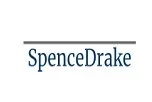According to the Tax Court of Canada in Ramey v. The Queen, 93 DTC 791 (Ramey), at paragraph 6, the "net worth method of estimating income is an unsatisfactory and imprecise way of determining a taxpayer's income for the year. It is a blunt instrument of which the Minister must avail himself as a last resort."
Subsections 152(7) and 152(8) of Canada's Federal Income Tax Act, RSC 1985, c 1 (5th Supp) provide the legislative foundation for the use of the Net Worth Audit method. According to subsection 152(8), a tax assessment by the Canada Revenue Agency ("CRA") is valid and binding despite errors, yet subject to dispute. Comparable provisions are found in section 299 of the Excise Tax Act, RSC 1985, c E-15.
As outlined in Ramey, the ideal method to rebut a net worth audit assessment is for the taxpayer to reconstruct their income for the respective year. A taxpayer can also challenge the use of the Net Worth Audit method as well as the methodology itself (see Truong v. The Queen, 2017 TCC 22 (CanLII) (Truong)).
When does CRA claim it will use the Net Worth Audit method?
CRA refers to a Net Worth Audit as a "indirect verification of income" method. According to CRA, they will rely on the Net Worth Method, if:
- The books and records of the taxpayer are insufficient and point to probable errors;
- The taxpayer does not keep separate bank accounts for personal and business income; They use one bank account and the income is mixed;
- The taxpayer's declared income would not sustain their standard of living;
- The company being audited operates in a sector where tax evasion is widespread; and/or
- Businesses that are comparable to the one that is being audited report higher income.
What is a Net Worth Audit?
CRA's underlying justification for utilizing the Net Worth Audit method is that there is some indication of irregularity or insufficiency in the taxpayer's financial affairs and records. Therefore, CRA will have to conduct a comprehensive review of a taxpayer's finances to determine the amount of taxable income. This can include a review of bank records, assets, and liabilities. Shareholder loan accounts are routinely targeted. Also, if CRA assumes that a taxpayer's business or corporation has unreported revenue that amount will likely become a taxable shareholder benefit to the taxpayer/shareholder and taxed at the personal and corporate levels without a deduction. Also, GST/HST may be assessed (see ITA subsection 15(1.3)).
In practice, the Net Worth Audit method enables CRA auditors to disregard reasonableness and essentially assume an increase in taxable income at all opportunities, a "blunt instrument." Because the assumption is that the taxpayer did not report income, resulting taxpayer negligence implications provide the auditor with the legal justification to open statute-barred years for audit. Subsequently, CRA will usually apply gross negligence penalties at 50% of the tax owing.
How do you Challenge a Net Worth Audit Assessment?
CRA auditors have enormous discretion. In addition, there is a reverse onus in tax law and in practice auditors are permitted to assume facts that a taxpayer must then rebut. Nevertheless, an audit assessment can be successfully challenged with a Notice of Objection and Notice of Appeal to the Tax Court of Canada.
A taxpayer can dispute whether or not the Net Worth method was necessary or the most appropriate audit method. To do that, it must be proven that the respective books and records were sufficient to determine income. If the auditor is provided with very sparse books and records, or none, then the court will likely consider CRA's use of the Net Worth method reasonable. Furthermore, the indicators listed above, if not in favour of the taxpayer, will probably lead to a determination that the use of the net worth audit method was justified. A taxpayer can also challenge a Net Worth Audit assessment by challenging the methodology of the audit through the identification of CRA audit errors. Each audit assumption can be challenged with supporting oral and documentary evidence.
Ultimately, the critical point of time during a CRA audit is the beginning. At this stage, if managed properly, a taxpayer can improve the odds of avoiding a punitive audit assessment.
The content of this article is intended to provide a general guide to the subject matter. Specialist advice should be sought about your specific circumstances.

